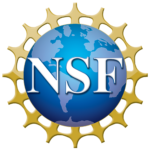CSE Award: EXP: CTSiM: Fostering Computational Thinking in Middle Schools through Scientific Modeling and Simulation
EXP: CTSiM: Fostering Computational Thinking in Middle Schools through Scientific Modeling and Simulation: 1124175


CSE Award: EXP: CTSiM: Fostering Computational Thinking in Middle Schools through Scientific Modeling and Simulation

CSE Award: DIP: Collaborative Research: Mixed-Reality Labs: Integrating Sensors and Simulations to Improve Learning

CSE Award: DIP: Interaction Research in Complex Informal Learning Environments

CSE Award: EXP: Students Authoring Intelligent Tutoring Systems for Constructing Models of Ill-Defined Dynamic Systems

CSE Award: EAGER: A Prototype WorldWide Telescope Visualization Lab Designed in the Web-based Inquiry Science Environment

CSE Award: DIP: Collaborative Research: Interactive Science Through Technology Enhanced Play (iSTEP)

CSE Award: DIP: The Science Through Technology Enhanced Play (STEP)

CSE Award: EXP: “Earthquake Rebuild” – Mathematical Thinking and Learning via Architectural Design and Modeling

CSE Award: DIP: BioSim: Developing a Wearable Toolkit for Teaching Complex Science Through Embodied Play

CSE Award: CAREER: Intelligent Representations: How to Blend Physical and Virtual Representations by Adapting to the Individual Student’s Needs in Real Time